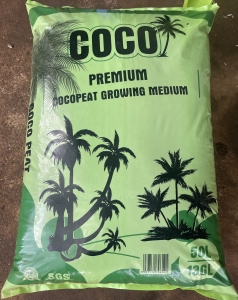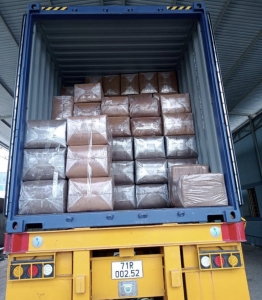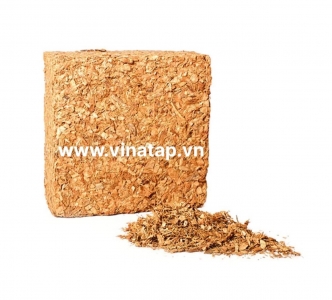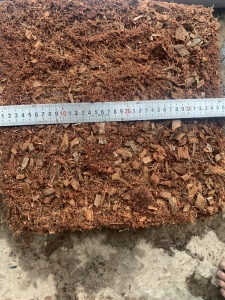Coir rope, coconut fiber rope, strong and durable for outdoor
Coir rope, coconut fiber rope, strong and durable for outdoor
Main uses:
- Wrap coir rope around the trunk to keep heat for the tree, not affect the sap in cold weather.
- Use coconut fiber rope suitable for vines. Durability over 06 months. After use, you can fertilize the stump to create moisture for the soil.
- Using coir rope for decoration brings high artistic effect.
Coir rope, coconut fiber rope, strong and durable for outdoor
Product Description
Coconut is the precious gift that nature give to human. All parts of coconut tree are useful.
Coir rope is a product made from coconut fiber threads, which is organic and eco-friendly. Using coir rope in decoration,
agriculture ... will contribute to making our living environment more and more clean and friendly with the environment.
Main uses:
- Wrap coir rope around the trunk to keep heat for the tree, not affect the sap in cold weather.
- Use coconut fiber rope suitable for vines. Durability over 06 months. After use, you can fertilize the stump to create moisture for the soil.
- Using coir rope for decoration brings high artistic effect.
Safimex supplies high quality coir rope with good price. Please feel free to contact us for more details of our coir rope..
Name
Coir rope
Material
100% coconut fiber
MOQ
1x40ft
Features
Eco-friendly, sustainable, strong, good for plant and soil
Color
Natural light brown
Usage
For decoration or agriculture
Delivery time
15-20 days
Packing
By roll
Payment
T/T , L/C, Western Union, Paypal
Detailed Images
Packing & Delivery
Contact Us
News
What You Need To Know About Reusing Coco Coir
If you’re growing in coco coir, you know how awesome this medium is. It’s sturdy, environmentally friendly, almost impossible to overwater, and perhaps best of all, it’s the perfect pH for hydroponic growing.
So, you grow in coco, you get great harvests out of your chosen medium, and you might find yourself wondering, Can I reuse my coco coir after it’s been spent on a harvested crop?
The short answer? Yes.
But you can’t just yank old roots out of your used coco coir, drop in a couple of germinated seeds, and expect to start up a
successful new grow. There’s a bunch of dead root material from your last crop in the coco’s fibers, and if you want to reuse that coco, you’ll first need to clear out all that dead stuff. Or even better, turn it into usable nutrition for the next crop.
In this article, we’ll explain how to do just that, including:
* How enzymes in your rhizosphere transform dead roots into usable nutrients
* How you can harness these enzymes to work in your coco coir grow
* The benefits of reusing coco coir
What Are The Benefits Of Reusing Coco Coir?
There are three primary benefits to reusing coco coir:
* It saves time and labour
* It saves money
* It’s an environmentally friendly alternative to using other grow media
When you reuse your coco coir, the primary benefit is as a cost-saving measure. After all, the less coco coir you buy, the less money you spend. You’ll also save time by reusing your coco coir. Much like buying less coco coir saves you money, making fewer trips to the gardening supply store saves you time and energy. And, as a grower, you know that saving time really saves you more than just time. It also saves you the physical and mental effort of bogging yourself down with unnecessary tasks.
Coco coir is a more eco-friendly option than rockwool cubes and peat-based grow media. Although peat-based media is great for plants, peat extraction isn’t so great for the environment, because peat bogs are a rare, delicate ecosystem that are being depleted to meet human demand. Rockwool, meantime, is a man-made material that can’t be composted, so when your rockwool’s finally spent, it’ll sit in a landfill, along with other refuse. Choosing coco from the outset is a healthy choice for the planet, and reusing your coco is simply another way you can make eco-conscious choices with your grow.
Although you can reuse coco coir, be careful to do so properly. Only reuse coco coir that’s been thoroughly reconditioned.
Otherwise, your new crops won’t just get a high-quality substrate, they’ll also get exposed to everything that was in your last grow, including potentially harmful pests and pathogens. And if you don’t take care to completely break down the last grow’s roots, then your next grow’s roots will be fighting those remnants for space in the coir.
Some growers choose to reuse coco coir in other ways, like making it into mulch for their soil-based gardens. You can do this, too, because coco coir is an all-natural, completely renewable product with an average pH of 5.2–6.8.




















 Online: 23
Online: 23
 Total access: 4390789
Total access: 4390789